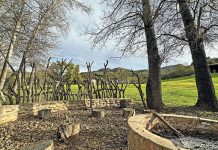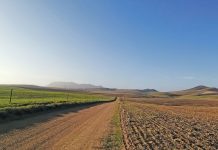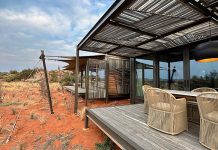Like the roar of distant thunder, the massive dynamite charge exploded in the crevice under the shallow water coral reef.
Like the eruption of a sub-marine volcano, the explosion drowned the sound of the crashing waves on the beach and spewed a column of water, limestone rubble and pulverised reef creatures 30m straight up into the bright morning sky.
A split-second after the first, a series of explosions followed in a line behind the backline waves, destroying the entire reef. All life swarming around the reef shortly before was instantly obliterated by massive shock waves and those creatures not physically macerated, rose slowly, like clouds of confetti to the surface.
Minutes later, hundreds of brilliantly coloured coral fish started washing up on the beach to form a scum line resembling the aftermath of a wedding, but in this case, a funeral.
Is it really far-fetched?
Fortunately, this tragic event has not yet happened, but when the recently out-of-the-blue announcement of a huge new oil-and-coal port at Ponta Techobanine just north of Ponta do Ouro goes ahead, it will.
Why? Because of the series of unique shallow-water coral reefs blocking the passage of ships just offshore. This is where they plan to build the entrance to the huge 30 000ha deep-sea harbour and industrial zone, from which rail and pipelines will carry coal, crude oil, liquid fuel and other products to Zimbabwe and Botswana.
Before anyone knew anything about it, the Mozambican government had already gazetted the boundaries of the area. The selection of the site is simply madness and another of those arrogant engineering hallucinations that have already caused so much destruction to this magnificent planet.
Look at the facts and judge for yourself: Ponta Techobanine, just beyond Ponta do Ouro and only 18km from the South African border, is on one of the most deserted stretches of coastline in Southern Mozambique.
It is unprecedented in pristine natural beauty and splendour, with one of the most unspoilt coastal forests on the entire subcontinent. The coral reefs in front of the site are world-renowned and considered to be among the finest in the region.
At Ponta Techobanine there is hardly even a dent on the almost straight coastline and no natural harbour of any kind. They’ll have to sadistically hack and dig a harbour into the forest and blast away the coral reef just offshore.
Apart from destroying the reefs, the project will have a devastating effect on the richest marine ecosystem on the subcontinent’s entire coastline, while endangering at least 10 threatened species in the area, including loggerhead and leatherback turtles.
The harbour will be just 22km north of Kosi Bay. With the strong Mozambique current running southwards, the potential threat of oil and other pollution from a massive influx of oil tankers and cargo vessels so close to the marine sanctuaries of the iSimangaliso Wetland Park is both inescapable and unacceptable.
The full impact
But the harm will not be limited to the ocean. It will be just as destructive on land, as the most disturbing aspect of the whole scheme is that the proposed site is right inside of what had become the subcontinent’s most magnificent and vibrant conservation hotspot.
This encompasses 10 established nature reserves (two in Mozambique, two in Swaziland and six in South Africa) as well as five unique Transfrontier Conservation Areas (TFCAs), linking these together.
The most important of these links is the Futi corridor, linking the Maputo Elephant Reserve along the ancient swampland elephant migration route to the fever tree-lined pans of Ndumu and the Mosi swamp of Tembe.
This was the agreement when the governments of the three countries signed the Lubombo TFCA Protocol on 22 June 2000. But now construction is set to start next year on the 1 100km Ponta Techobanine Inter-Regional Heavy Haul Railway Project.
The railway, pipelines and all the roads for huge haulage trucks to the new harbour will slice right through the swampland of the Futi corridor. With its even coastline, Southern Africa has only three natural harbours – Saldanha, Durban and Maputo.
After Saldanha, Maputo is the second best of the three, with ample safe anchorage for ships waiting to enter port, but at the moment it’s totally under-utilised and too shallow for super tankers.
Of course, it would be much more sensible and infinitely less costly to dredge Maputo to the required depth than to take the crazy option to try and build a port out of nothing in a totally wild place where there is no bay, no infrastructure, not even one decent road!
The alternative is to use Richards Bay – just 300km away, which had been extensively dredged during the 1970s in the 3 000ha lagoon of the Mhlatuze River. It’s a specialist harbour suited for the particular purposes of the new port.
So much has happened lately, at least in our part of the world, that it seemed as if political leaders had finally come to their senses and realised that our future existence on this planet will ultimately depend on just one thing – how well we look after the environment.
Irrespective of the strength of the global economy, or whether every living person has a job, or how peace can be established between nations, or how many conferences we host about green technology, it will ultimately mean nothing if we keep on destroying this planet bit-by-bit, because good planets are hard to find.
We can forget about migrating to Mars, once we’ve ransacked the earth. The present US mission to the hostile red planet to see if there’s any water or life is just another waste of the earth’s ever decreasing resources.
We live on one of the most awesome planets in the universe, overflowing with water and brimming with life. After we’ve been here for over 500 millennia, we still know only a fraction of what goes on in our oceans. All we have to do is to enjoy this paradise and look after it, but we’re constantly hankering to go somewhere else.
There is no doubt that weather patterns are changing, and it is of course possible that the majority of scientists are right in saying that the way we live is the contributing cause. But scientists are just as corruptible as politicians.
The extreme enthusiasm with which the UN, as well as governments and big business from the northern hemisphere whose hands are the dirtiest and whose air the filthiest, either refuse to commit themselves to do the right thing, or try to brainwash us to do it so they can buy carbon credits from us to redeem their own sins, makes me highly suspicious. I see it as the biggest scam since the first bank opened its doors.
Unless every cent generated from carbon taxes is used for the right things, it’s just a creative new way to fill government coffers so they can afford to host COP conferences for the same hypocritical UN, that, together with the World Bank, will finance the Ponta Techobanine port. It wouldn’t surprise me if the Chinese are involved as well.
Although Mozambican President Armando Guebuza will be enjoying our hospitality at COP 17, we’ve got a snowball’s hope that anyone will discuss this matter with him. The best we can do is to make an urgent en masse appeal to President Zuma that the conditions of the Lubombo TFCA Protocol be honoured, even if SA has to assist them to dredge Maputo harbour. Failing this, all we can do is to withhold our money from Mozambique and spend it somewhere else.
Contact Abré J Steyn on 083 235 4822 or email [email protected].
Caption:
International Union for Conservation of Nature classifies the hawksbill turtle as ‘critically endangered’ and they have been spotted at Ponta Techobanine.
MICHELE WESTMORLAND












